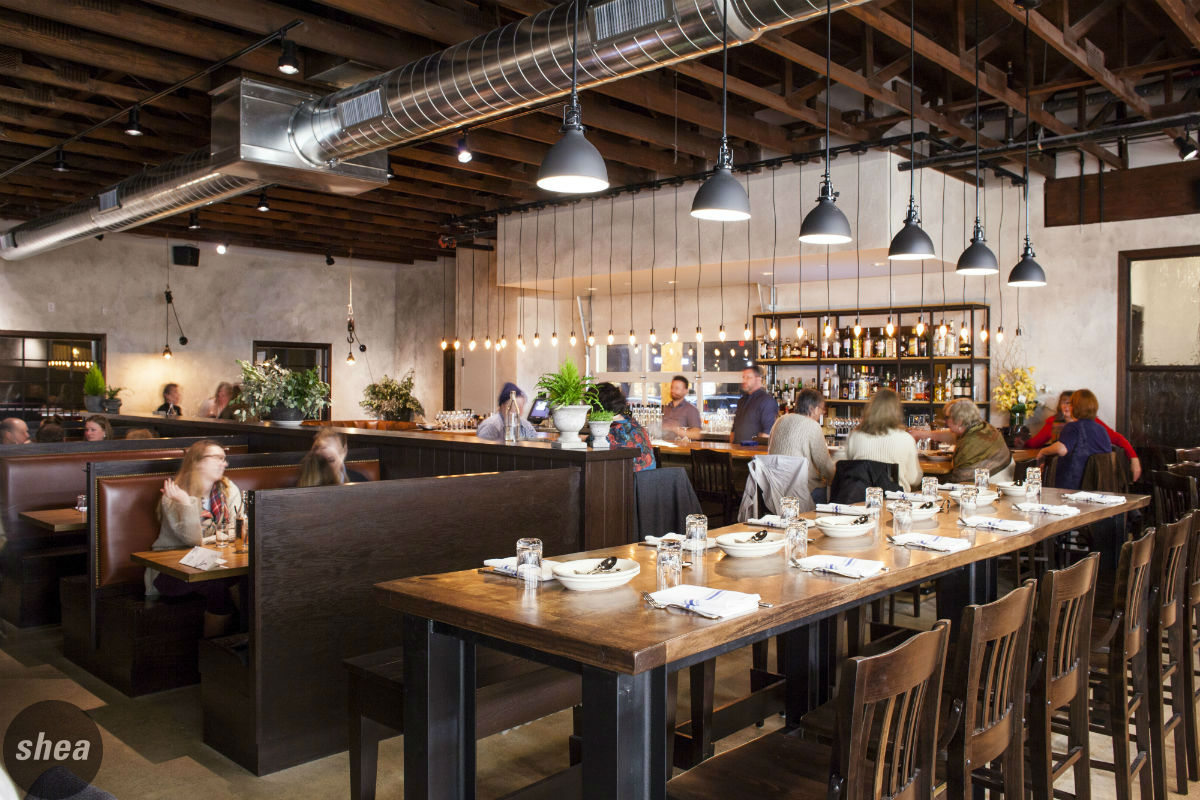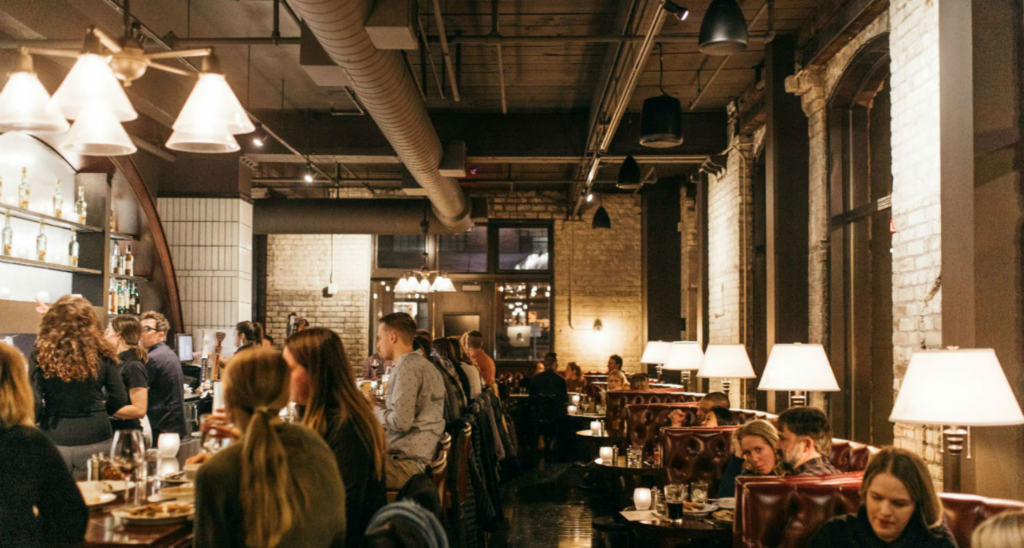We are all deal junkies.
In our businesses, we love getting the new client, closing the sale, doing the deal.
The Twin Cities is and has been on the cusp of a big burst of development, which is good news for us junkies. Business is great here locally, right? We’re all busy, busy and we’re all happy to share our stories of busy and the opportunities popping up every day.
In addition to ongoing space turnovers, and building/real estate renovation and refresh, we’ve got new hotels, new housing projects, building renovations, stadiums and sports fields.
But a development burst means the faster we move and the more deals on the table, sometimes the business sense and strategy of the deal gets minimized or ignored altogether.
The fallout is under-utilization (or mis-utilization) of space, under-capitalization and eventually resulting business failures. In short, vacancies and half empty developments that affect us, our Twin Cities community as a whole, and our clients and partners on both the real estate and tenant side of the business.
How can all of us, especially those of us in legal, financial, design, architecture, brokerage and marketing roles, be smarter and better business partners?
How can we focus on the art of the business instead of just making the deal?
We need to be consultants not vendors, partners not brokers, and relationship-based, not transactional.
We need to make the connection, not just the contact.
Strategic partnership is our mantra at Shea, and it’s important for all of us to look beyond the deal in front of us to have a responsibility in the greater community and business success.
We’ve all been there.
A developer/landlord and a potential tenant are about to enter into an agreement. They’re both excited and relieved, because it’s been a long road.
Then, they call us. And the more we learn, the less we feel it’s a good fit for any number of reasons: wrong neighborhood, oversaturated market, the wrong concept, the wrong economics.
You have 2 options:
Option 1:
Say yes, do the work, make the money. It’s their business, right? They should be the smart ones and they think it will work, who are we to interfere?
Option 2:
Approach as a strategic partner. It’s not about giving your opinion, or stating subjective “facts.” It’s about working with them through the finer points to see if you can improve the situation.
At Shea, the strategic partnership is the core to our success and growth. Our clients are not order-givers, and we’re not reactors.
We become strategic business and brand partners working to create a viable business and experience that will be successful in the marketplace. Here’s an example:
A developer refers us to a new tenant that has an LOI on the space. They’ve got financial backing, they’re national, the risk is low, their credit is good, and they want to refer us as a design partner/architect.
At Shea, we respond right away… And we promptly ask for all the business information from both sides.
- What’s the business/marketing plan?
- Brand and Identity? Values?
- Mission/Vision?
- Target audience? Point of Differentiation?
- Why this neighborhood? Proximity/access?
- Why will this work? Why a national brand?
- What are the budget expectations on both
sides? - What are the space terms of the lease? Exhibit C?
At Shea we always start with the business and the brand. We either help develop it, or make sure someone else has.
First, there is the reality of developing the space.
On the developer/landlord side, what is reasonable to give in TI or space conditions that will be smart business, but will ensure tenant success.
Using that as a starting point, we work with the tenant to create a budget in four key areas:
- Construction costs (the stickiest part of this comes into play with restaurants because the single largest cost is restaurant kitchen and infrastructure)
- Fees: Not just paying us (although that is critical). Which other engineers or consultants need to be involved? How about SAC and WAC charges? Those can be big, scary numbers that are hard to predict without the right due diligence.
- Purchased items: What does the tenant need to buy? Furniture, merchandising fixtures, décor, shades for your windows. There are a lot of potential “gotcha’s” in here.
- Opening, Operating and Marketing Costs: Why would Shea care about this? Because if the tenant is undercapitalized, this is what gets nixed with the explanation that they’ll pay for it out of opening profits. That statement is the kiss of death.
If we get past all of that, we look at the strategic fit. Is this an unmet need in this market? Does it fit this neighborhood? We all know there is a big difference between the new downtown east, the CBD, and the North Loop. But they can all pull from some of the same residential and business demographics, and look similar on paper even with some major differences.
Then, apply business and common sense.
Learn from every success and every failure. Stay on top of the idiosyncrasies of each market and each industry we work in. The cost of entry and cost of doing business for a restaurant is much different than a workplace or retailer. As a strategic partner, we need to have this knowledge base.
Have a strategic viewpoint. You need to be smart, you need to be instinctual, and you need common business sense to be a good partner, rather than just a hired hand. And we can’t be afraid to be honest and upfront.
Don’t bring personal subjectivity into it. Draw upon our intense knowledge of this community as well as all the others cities we travel to and do business in. Be a sponge.
We have the benefit of working in almost 40 states, so there is a lot to learn from and use.
We think nationally, but act locally, no matter which city we’re doing business in. And it’s not about tracking trends, it’s about future thinking and leadership.
And, always consider all sides: We have a unique position of both marketing spaces and helping tenants find space. We also help clients assess existing businesses and existing spaces.
In some cases, we’re faced with helping clients make tough choices: What is the viability of this business? And in this location? That’s a big responsibility that can’t be taken lightly.
What all of us in this room counsel can mean the success or failure of a company and its employees.
Sencha Tea Bar is a great example.
It had a great location for a tea concept on Hennepin near Uptown, but was tired and not connecting to the right market. Instead of looking for new space, or abandoning the location, we reinvented the brand to connect to its market, with a concept refresh that would also work to grow in many other locations.
Maybe it’s helping them think of their business and growth opportunities in a new way, like Sencha, or making other connections.
It’s not just making the call and seeing if they’re interested in a space, it’s about weaving an opportunity together.
The Mpls Armory former owner was a client for years, parking cars, making money and dreaming of a development he realistically couldn’t and didn’t want to do. We didn’t just keep this annuity client going, or talked him into taking the deal with a national operator.
Instead we found and connected him with a buyer who had the means and the mojo to create the Armory into a viable piece of the Minneapolis community. We created a vision, a connection and with our passion, we helped make it happen.
Create the opportunity, don’t just communicate it.
We all get excited about nationals coming in, and the triple A credit doesn’t hurt either. But we shouldn’t and can’t discount a lot of our home grown entrepreneurs and the role they can play in our community’s growth.
That includes helping an existing business see the need to retrench for the future and start looking toward growth, not just maintenance.
One local example of this, Davanni’s, was actually brought to me by Peter Dugan of CBRE. He saw a client with potential that needed a push.
We pushed and I found my way in front of them to present the case that their brand and company DNA has relevance, but it can’t stand up to the increasing pizza competition. We helped reshape their strategy and brand to focus on their core of a neighborhood pizza place, not a generic chain. And we made what was for Davanni’s a major change.
Refocus the strategy and the brand, change the dynamics of the experience, put in a bar.
And boy did it feel good to hear six months in that sales were up tremendously. People were staying, people were ordering beer and wine, people were ordering more food. And now Davanni’s is growing again and has become a viable tenant for the right space.
We have some tremendous businesses, retailers and restauranteurs. And some of them need a little strategic help and a push to use their past success for future growth.
Create the opportunity, don’t just make the call.
We approach every call with this same intensity because at the end of the day, our client’s success is a reflection of us. If we all approached every opportunity this way, we could contribute to a greater community as a whole.
Our client’s success is a reflection on us. If we all approached every call, every opportunity with the same strategic intensity, look at the impact we could make on the entire community. That’s the Shea goal every day and with every client.



